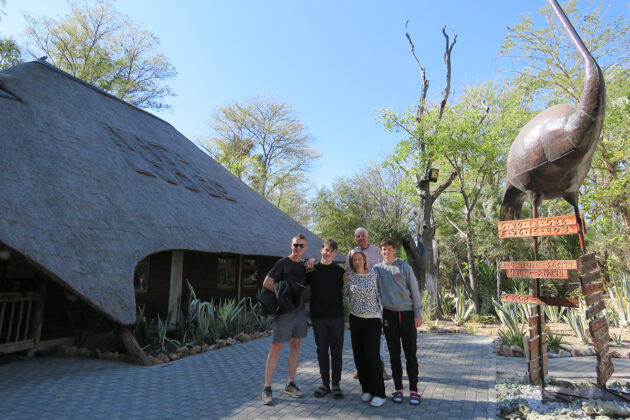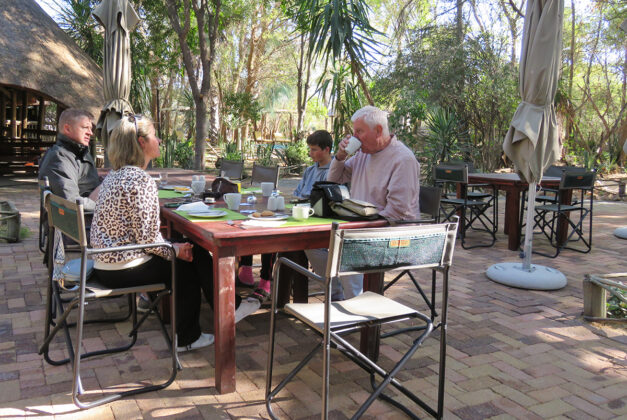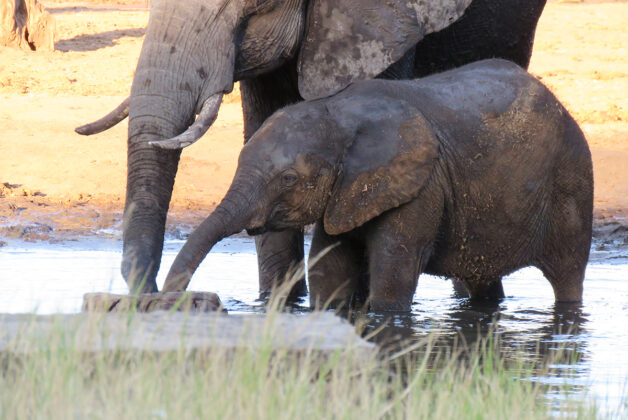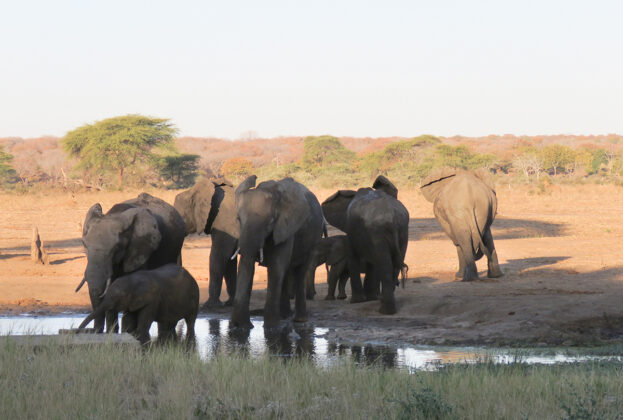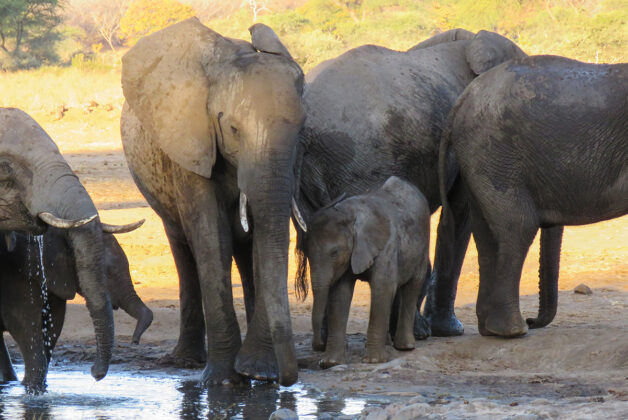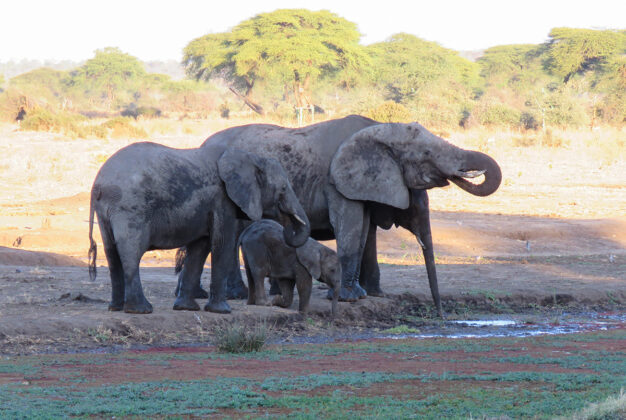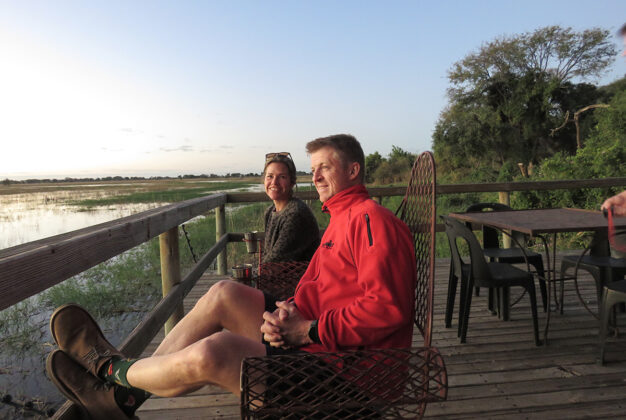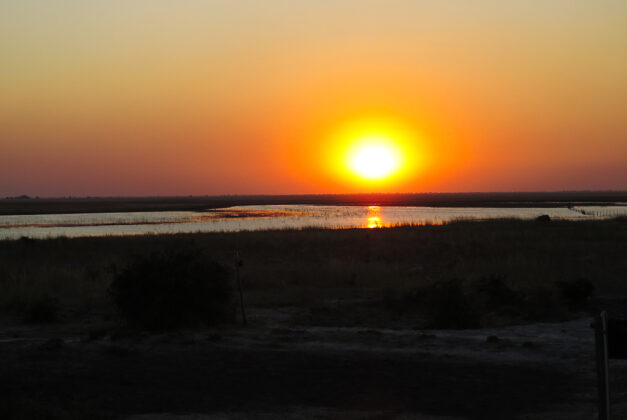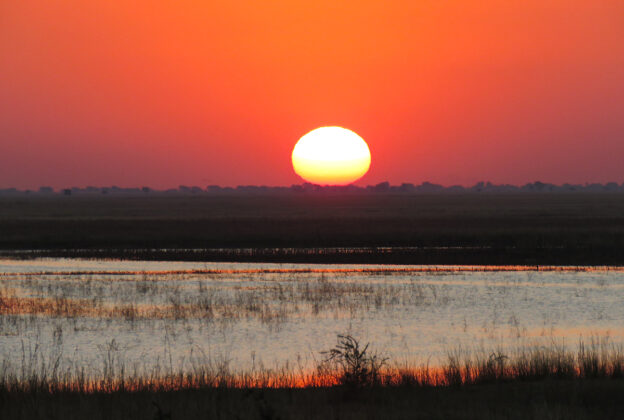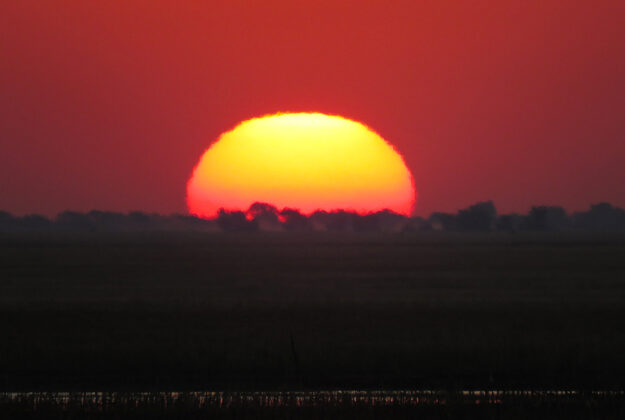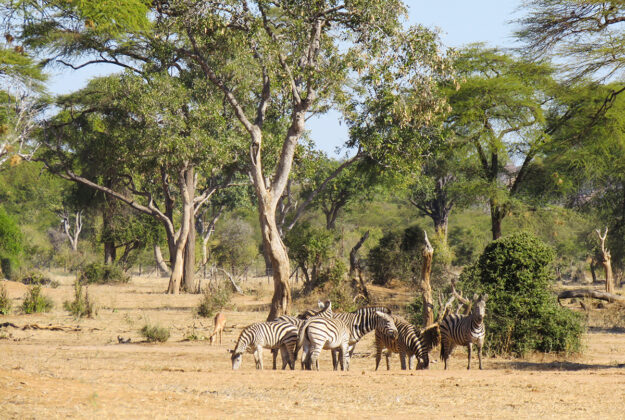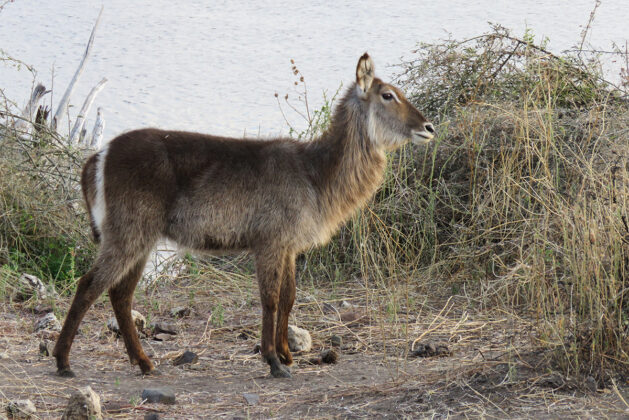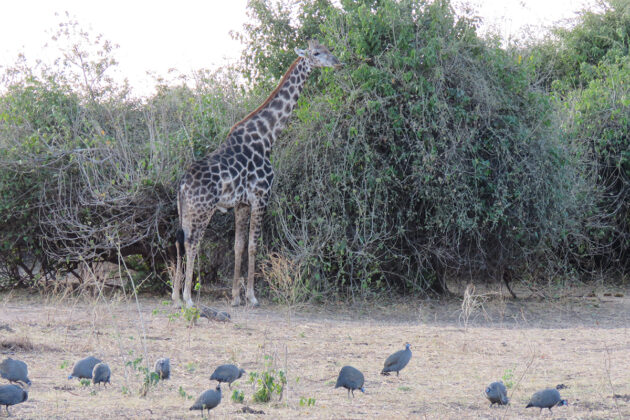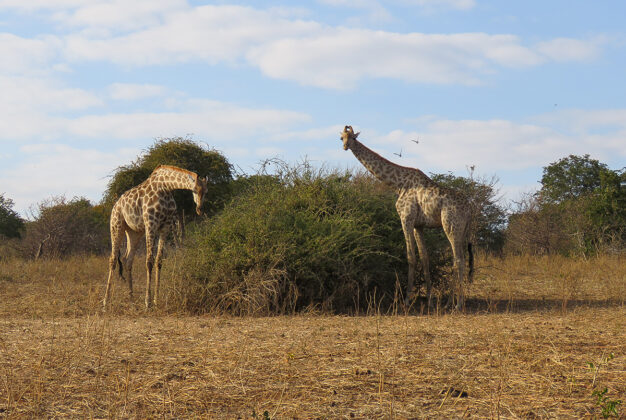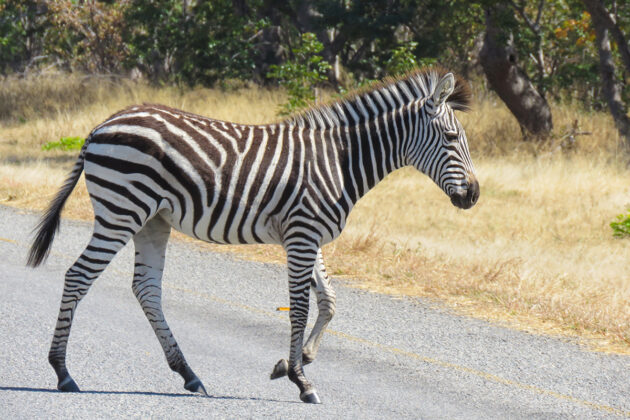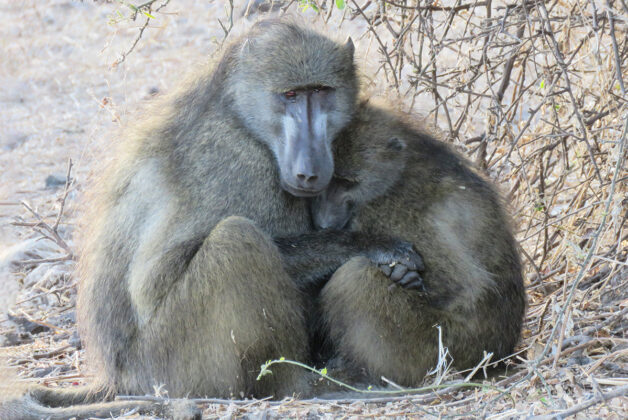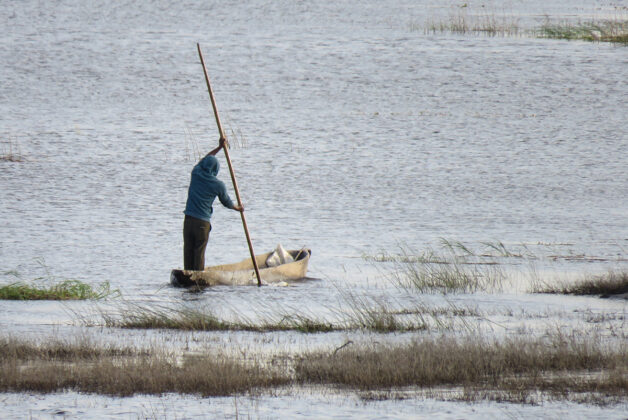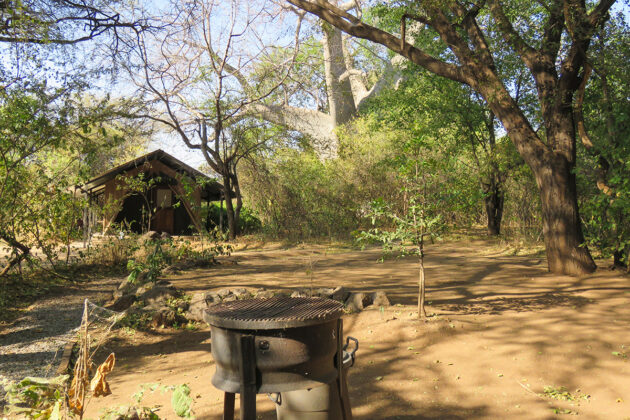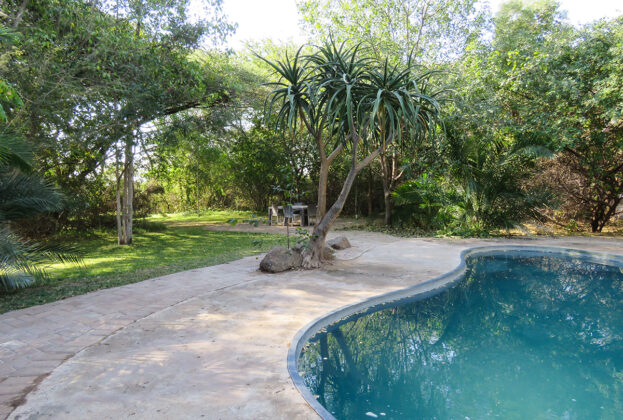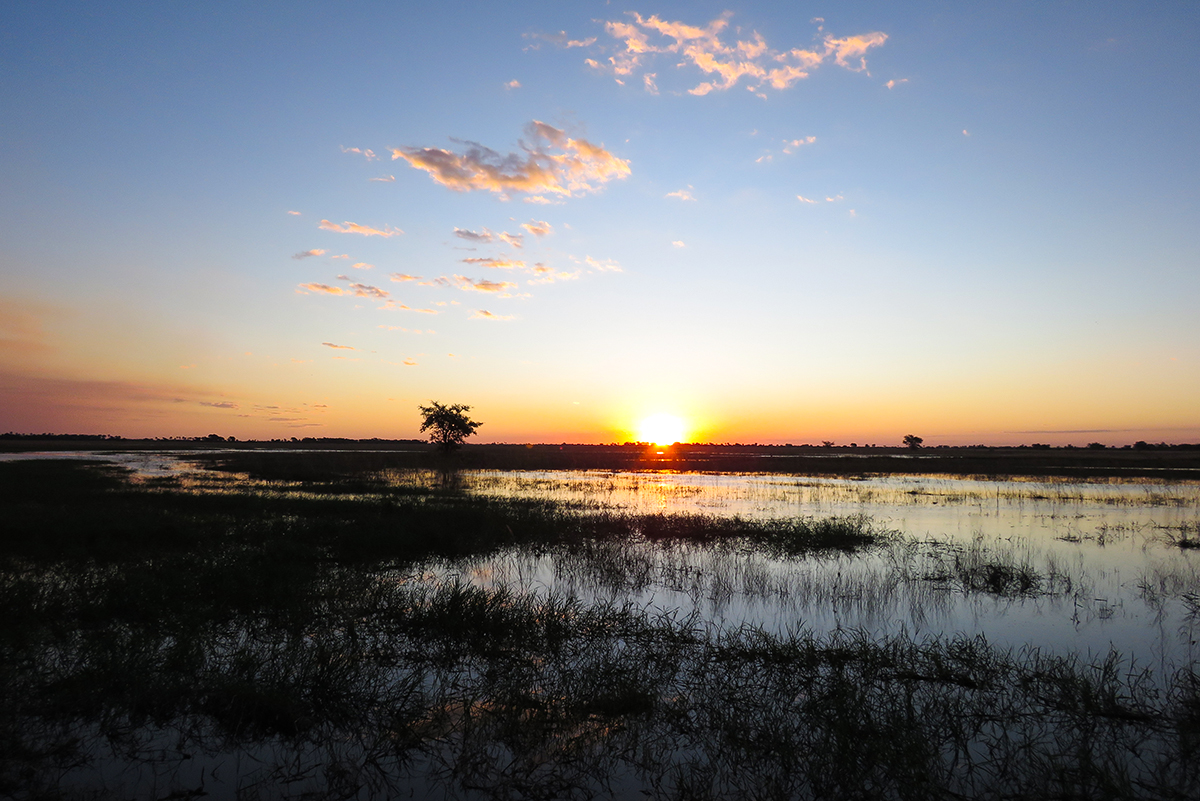
Winter gets a bad rap generally. It gets light late, dark early, and it’s chilly. In the Highveld, it also has some advantages, though. Days are generally bright, it doesn’t rain, and once the morning chill has receded, the days are mild, only getting nippy again when the sun bids goodbye to the day, which typically happens around 6 pm. The big blue skies that we enjoy always turn my thoughts to Botswana. The sparsely populated, vast open spaces give the cerulean sky an even broader appeal. The idea of traversing the Botswana plains and soaking in the wildlife experience becomes immensely appealing.
When my son Dave suggested that I join him, his girlfriend Lisa, and her two teenage boys, Jake and Dean, on a trip to Botswana, I was all in. It would also give me the opportunity to do a trip with my “new” second-hand Mitsubishi Triton 4×4. My mate Peter is my go-to Botswana travel buddy, so I convinced him to fly up from Cape Town and join us. My friend Ken has an expression, “the hunt is better than the kill”, and this rings true for camping trips too. The planning of where to go, what to do, and what to take starts to amp up the excitement, which helps the time fly by and come your departure date, you are raring to go. Irene sat this one out as she recently enjoyed a cruise that she was blessed with, and looked forward to some time alone to binge-watch a season or two of Yellowstone.
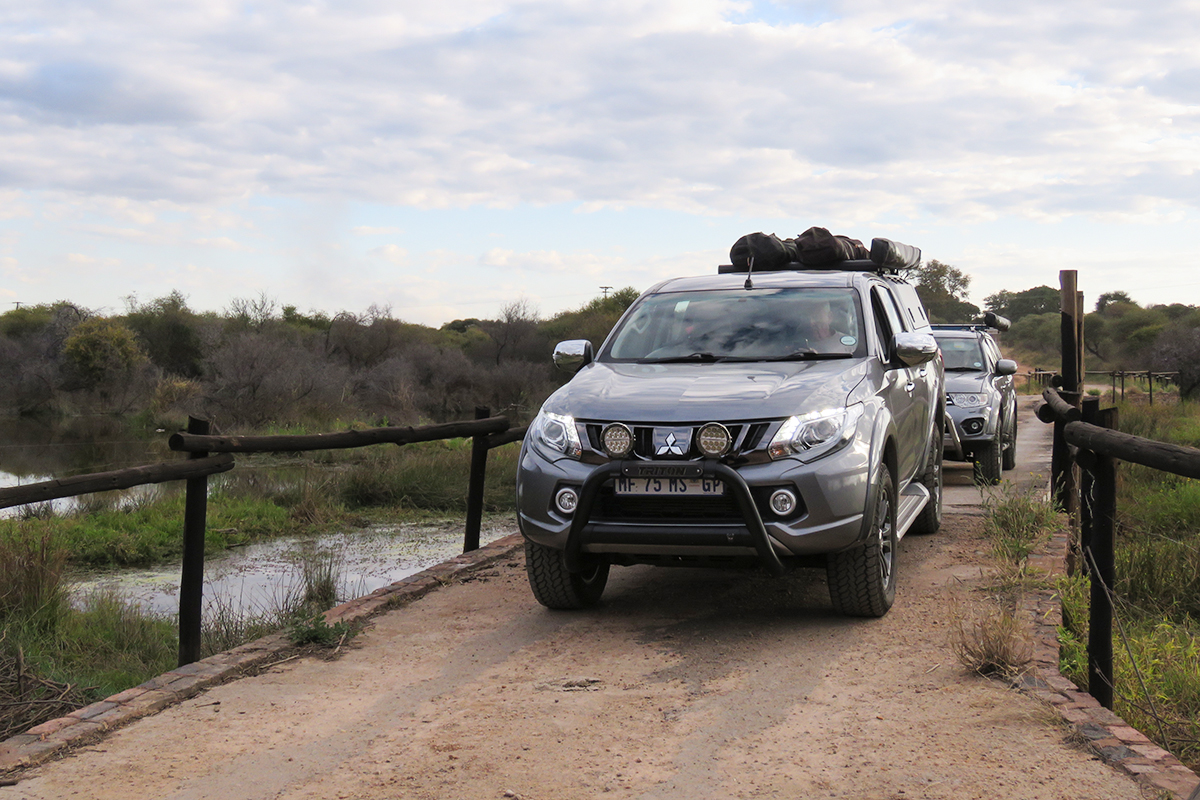
Lisa and her boys were Botswana newbies, so they were wildly excited at the prospect of a trip to relatively untamed Africa. Vehicles were packed and repacked as we fine-tuned our camping kit. The trip was going to combine chalet and tent dwelling, depending on where we were going. Three Oztents went on the roof racks, and all the bedding and cooking kit went into the back of my Triton. Dave had a morning’s work on the Thursday of departure, so we had a short first day’s travel planned. Our first night was at De Kuile, a rustic “hunters’ camp”, ten k’s beyond Lephalale. This gave us a 70 km hop to the Stockpoort/Parr’s Halt border post on Friday morning. We arrived in the late afternoon and settled into the basic but comfortable accommodation. In no time, we were seated around a hardekool fire with sundowners in hand. Sosaties, garlic bread and salad were on the menu. Dave braai’d, as we enjoyed our first hardekool “bushveld TV” of our trip. The therapeutic effect of the bushveld and a braai fire worked their magic as the city stress ebbed away. The weather was nippy but surprisingly mild as, dinner done, we sipped on a single malt nightcap before turning in.
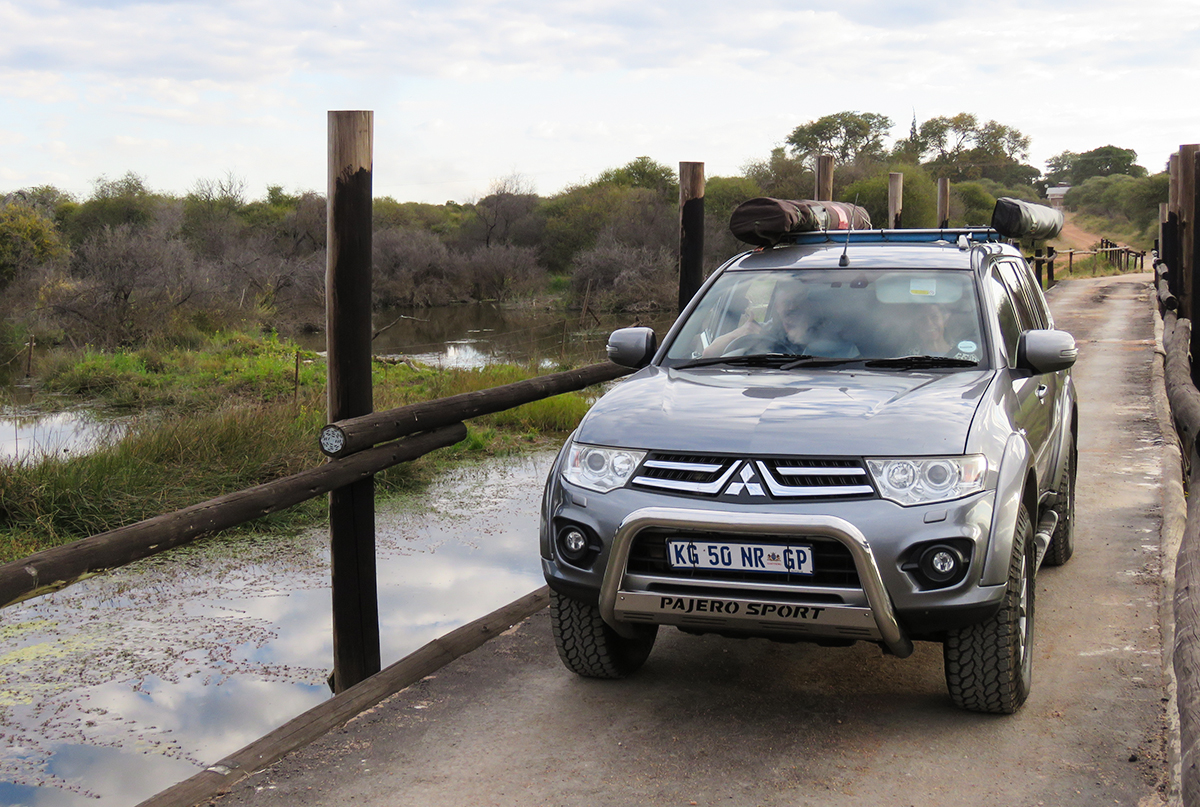
By seven the next morning, we were on the road to the Botswana border. The horror show that is Grobler’s Brug/Martin’s Drift border post, logjammed with trucks, has caused us to rather use Stockpoort/Parr’s Halt, despite the 13 km of dirt road that needs to be negotiated on the Botswana side. With the 4×4’s dirt is welcomed rather than avoided, so within half an hour, border formalities were completed, and we were travelling in Botswana. We drove the tar road from Macheneng village to Mahalapye, where we refuelled with significantly cheaper Botswana diesel. Mahalapye is a sizeable town with all the modern amenities and is situated on the A1 Road that runs from Gaberone in the southwest to Francistown in the northeast. Breakfast was at the Wimpy in the next town, Palapye, where Lisa met with and introduced us to some old friends who live in Palapye. We gleaned some valuable route tips from them, which stood us in good stead on our return journey, but more on that later.
Back on the A1, we smashed the 160 k’s to Francistown, where we got three whole fillet steaks from a great butchery that I know from previous trips. If bought from an appropriate butchery, Botswana fillet is the best you will ever eat, and it comes at half the price of similar quality steak in SA. After sixteen k’s, of which eight k’s are a benign dirt road, we pulled into one of our favourite campsites in all of Botswana, Woodlands. Professionally run and immaculately maintained, Woodlands offers both superb campsites and beautiful chalets overlooking what, at this time of the year, is a dry riverbed. We were privileged to see this as a raging torrent during our December visit.
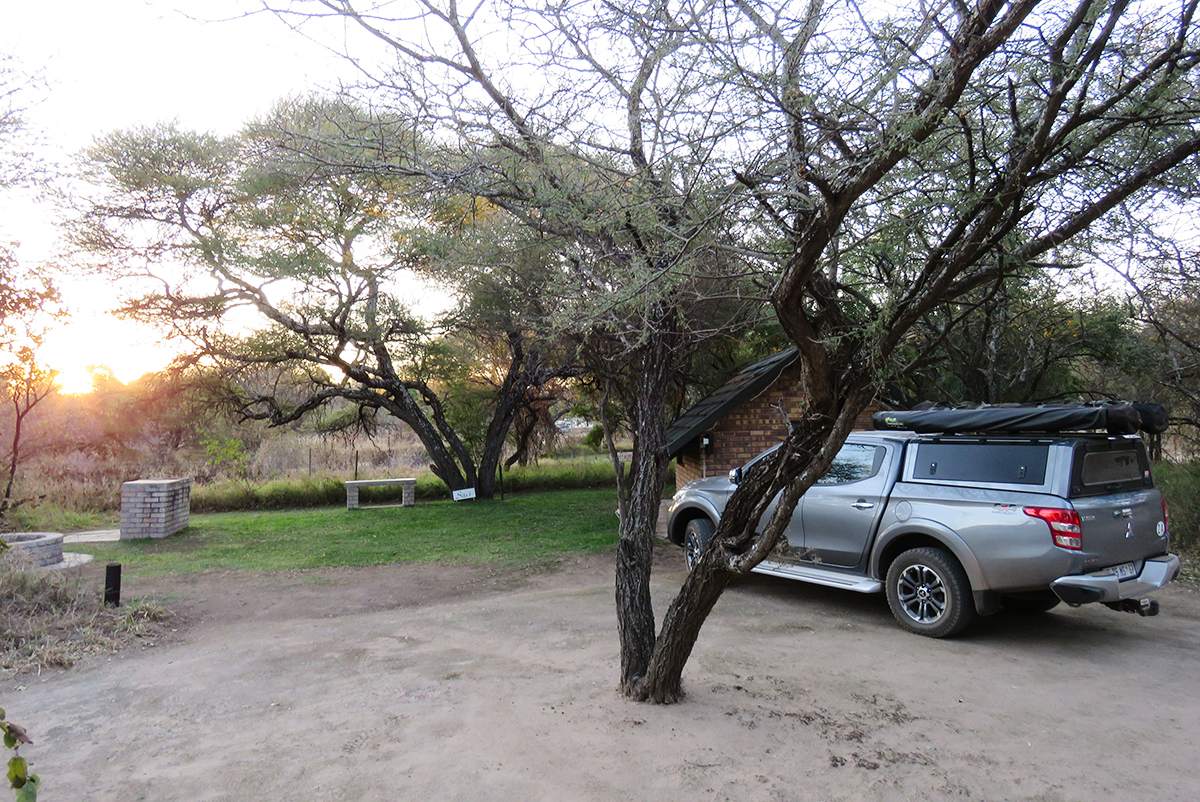
There is a covered deck with a dedicated braai space overlooking the riverbed, and this is where we prepared and enjoyed our second dinner of the trip. The first night in Botswana is always special, especially in a stunning bushveld environment. Woodlands is situated on what is known as the “Hunter’s Road”. A route traversed for over 150 years by hunters and traders travelling into and from the hinterland of this vast country. If the trees could talk, what tales would they tell? It somehow seemed fitting that our first night in Botswana should be in the footsteps of these ghostly giants.
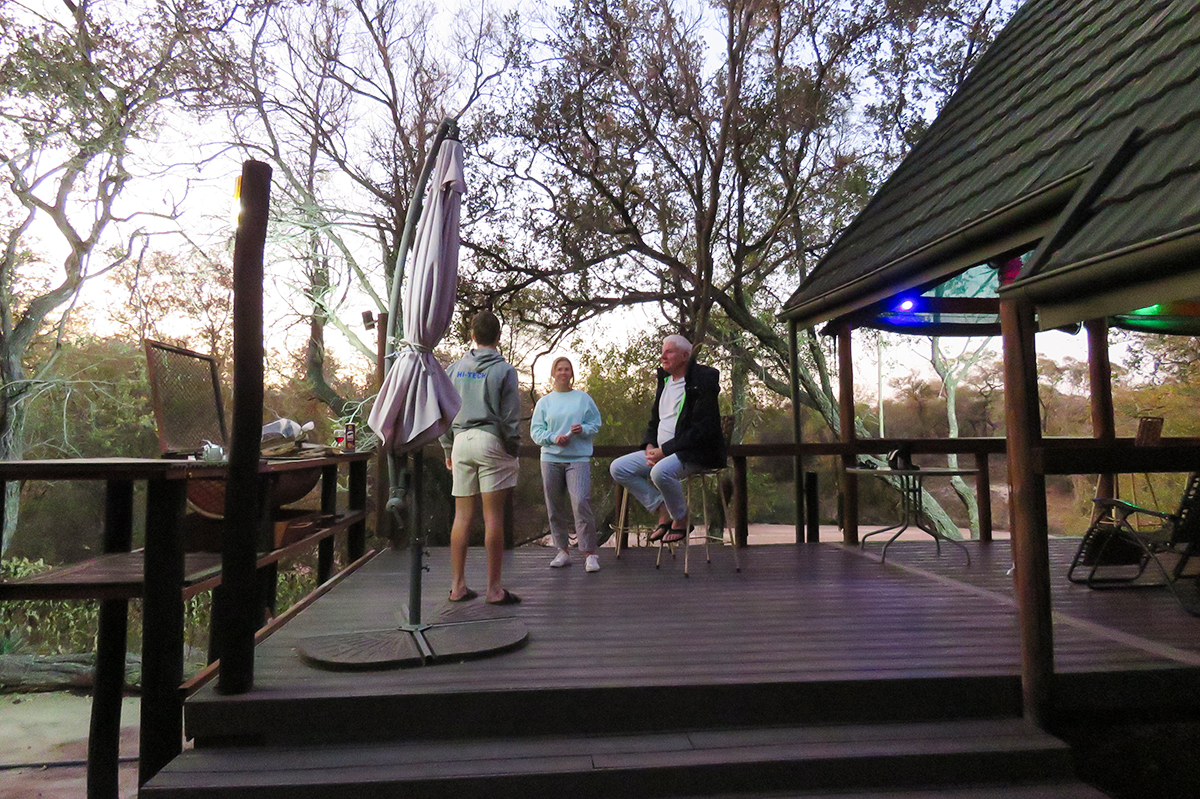
Our first stop the next morning would be at another Botswana legend. Nata Lodge. Two hours travel from Woodlands; it is the perfect breakfast stop. Their breakfast buffet is expensive, especially for South Africans, but it is one of those things that, if at all possible, you must treat yourself to. To see our two teenagers tuck in was a treat, not that the rest of us held back either. Tummies full and hunger satiated, we travelled north, through Nata and on towards Senyati, a campsite adjacent to the Zimbabwe border about 20 k’s short of Kasane. About 170 k’s out of Nata, we had a wildlife encounter that will forever be etched in our memories. Jake, who is by nature a quiet person, piped up with an almost nonchalant “Buffalo, lions eating a buffalo”. Dave was driving and actually overshot the scene, wondering if it was possible, but at the same time braking. He did a U-turn, and Jake managed to take some photographic evidence. We were behind them and followed suit, in time to see a couple of lionesses slink into the bush, temporarily disturbed on their kill. This all unfolded thirty metres off a national road, just in the sparse treeline. Incredible!
We stopped at Pandamatenga, a huge fenced-off farming area 30 k’s later, just to let off some of the excitement of our incredible sighting. What a magnificent, wild and exciting country Botswana is. Human encroachment and population growth in Africa have made Botswana, and Namibia to a lesser extent, some of the few countries left where you can still have this sort of experience. I have ridden this road many times on a motorcycle and had many game sightings, especially elephants, but never a lion. Wow! Driving to Senyati, I was reflecting on our lion encounter. Unfortunately, even Botswana’s prolific wildlife is coming under pressure. On a recent visit to Khutse Game Reserve, on the southern edge of the Central Kalahari, almost all the lions which made this park so special have been wiped out by villagers bordering on the park. A goat or cow is taken, and in a fit of anger, the lions responsible are killed, either shot or poisoned. Ten years ago, I visited Khutse and enjoyed numerous lion encounters, but sadly, hearing the roar of these magnificent animals has now become a rare occurrence. Botswana Wildlife should come up with a compensation system for such losses. Lion numbers in Africa have dwindled steadily over the years, and we should act before it becomes another “rhino story”.
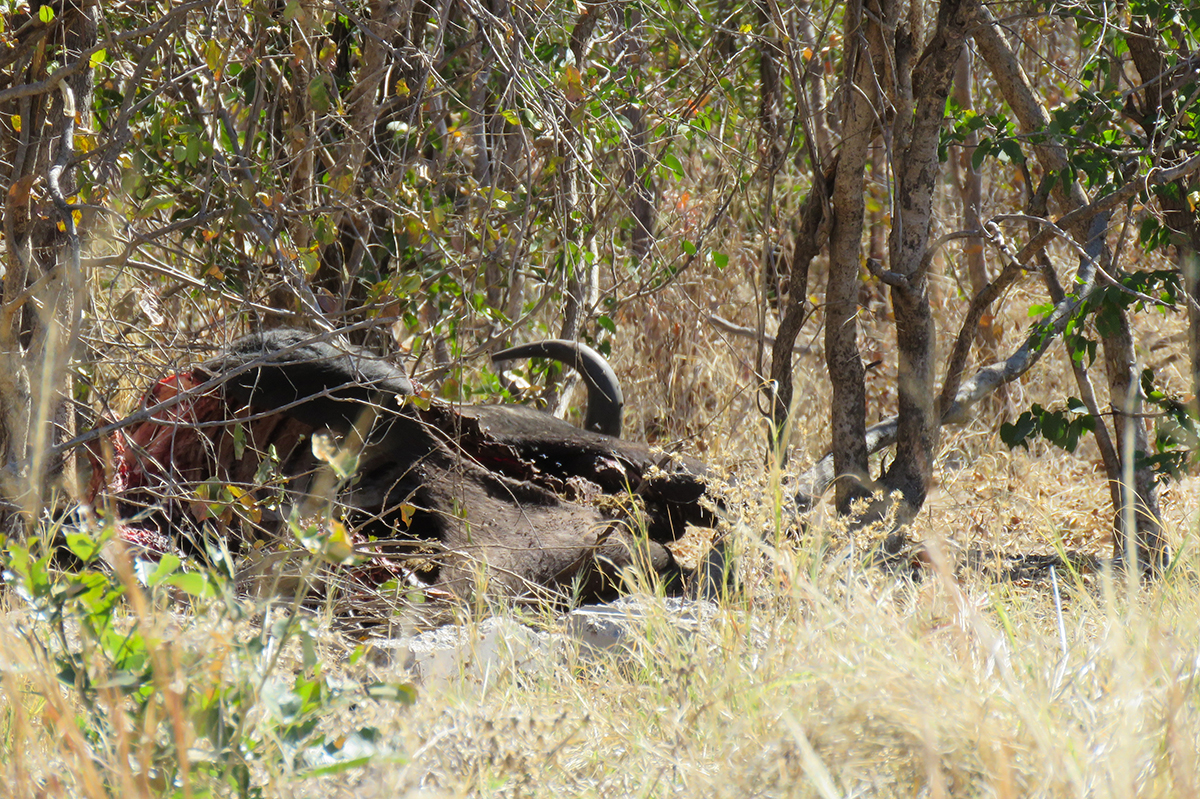
Kruger Park in South Africa has found ways for neighbouring villagers to benefit financially by being involved in conservation efforts. The long-term tourism revenue will eclipse such spending in the long run. If Botswana don’t actively protect their wildlife heritage, it will have squandered its single biggest natural asset. If well managed, the sustainable foreign exchange revenue from wildlife tourism, allied to huge job creation, will eclipse diamond revenue. Diamonds will eventually run out. Botswana cannot allow the same to happen to its wildlife. They are blessed with a small population in relation to their tracts of unspoilt wilderness. Their wildlife is a world heritage of which they are the custodians and beneficiaries.
Leaving Pandamatenga, while still virtually in the village, an eland almost centre punched Dave’s Pajero Sport as it dashed across the road. How it missed him, I do not know! Our next camp, Senyati, has a waterhole with a ground-level hide accessed via an underground tunnel. This is located in front of a double-story thatched viewing deck. The campsites are pleasant in that they each have their own individual shower, toilet and kitchen setup. Hot water is still the “donkey” system, which works effectively when properly managed. Fires lit under the geyser drum provide hot water. Fires need to be made timeously. When the camp is as full as it was while we were there, it is a bit hit or miss. We were using our expensive firewood to keep our water hot. Generally, the camp is a bit untidy and unkept, signs that management is not up to scratch, a sentiment that is echoed on TripAdvisor. Since COVID, camping prices seem to have escalated sharply in Botswana, and facilities do not always meet expectations given what you are required to pay.
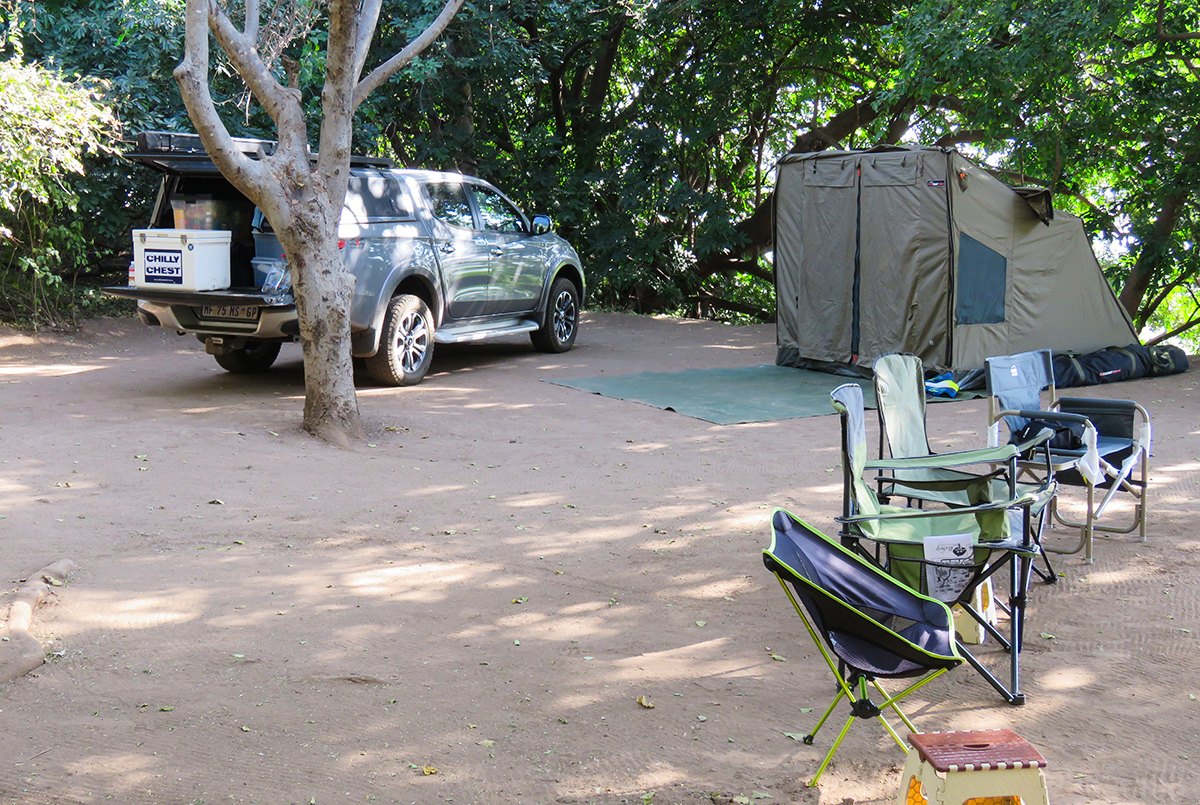
The wildlife experience is what continues to come to the rescue, bringing tourists back despite. Dave, Lisa and the boys were down in the hide one evening watching a small herd of elephants, including some adorable “littlies” drinking. After a good while at the watering hole, almost as if on command, the elephant trumpeted and advanced towards the hide, even sticking trunks into the apertures, as if trying to get the scent of the occupants. Needless to say, adrenaline was pumping like mad for the hide occupants. Just as suddenly as their approach, the elephant wheeled and trundled off. Elephants move in a fashion that is almost eerie. They come and go in silence. They seem to appear as huge grey wraiths out of nowhere and disappear in a similar fashion. Truly incredible animals.
We spent three nights at Senyati, during which time Dave took Lisa and the boys on an excursion to see the spectacular Victoria Falls in Zims. I have seen them numerous times before, and, dare I say it, back in the good Rhodesian era when, despite the bush war, there was an upbeat and positive vibe in the town. Tourists abounded, and curio sellers had pockets full of loot. Tourism is apparently picking up again, but I doubt it will ever get close to the heady levels of the ‘70s and ‘80s. I prefer to remember all those times I visited in the heyday, before dollar-based pricing made everything extortionately expensive. Cash-strapped countries need to make the most of what nature has endowed them with, and in the case of the Victoria Falls, they certainly do! Again, it is worth biting on the proverbial bullet and just doing it. It is one of the great natural Wonders of the World after all.
Peter and I cruised Kasane, checking out some of the lesser-known lodges that enjoy the Chobe River waterfront. One that really impressed was Kubu Lodge. Well run and maintained, it is beautifully located with stunning river views. The kicker for me is that they have discreet SADEC rates that make it a bit more affordable for South Africans. They also have a nice campsite and restaurant facilities. I will definitely be spending time there on my next trip, God willing. Chobe Safari Lodge is undergoing renovations, but we had a drink at one of their riverside bars. Lovely! Doing the pricing for river cruises was a bit of a shock. What was a must-do in the past, and very affordable, is now the preserve of Euro and Dollar tourists only. There is no way a family of four could justify the kind of spending required. Sad.
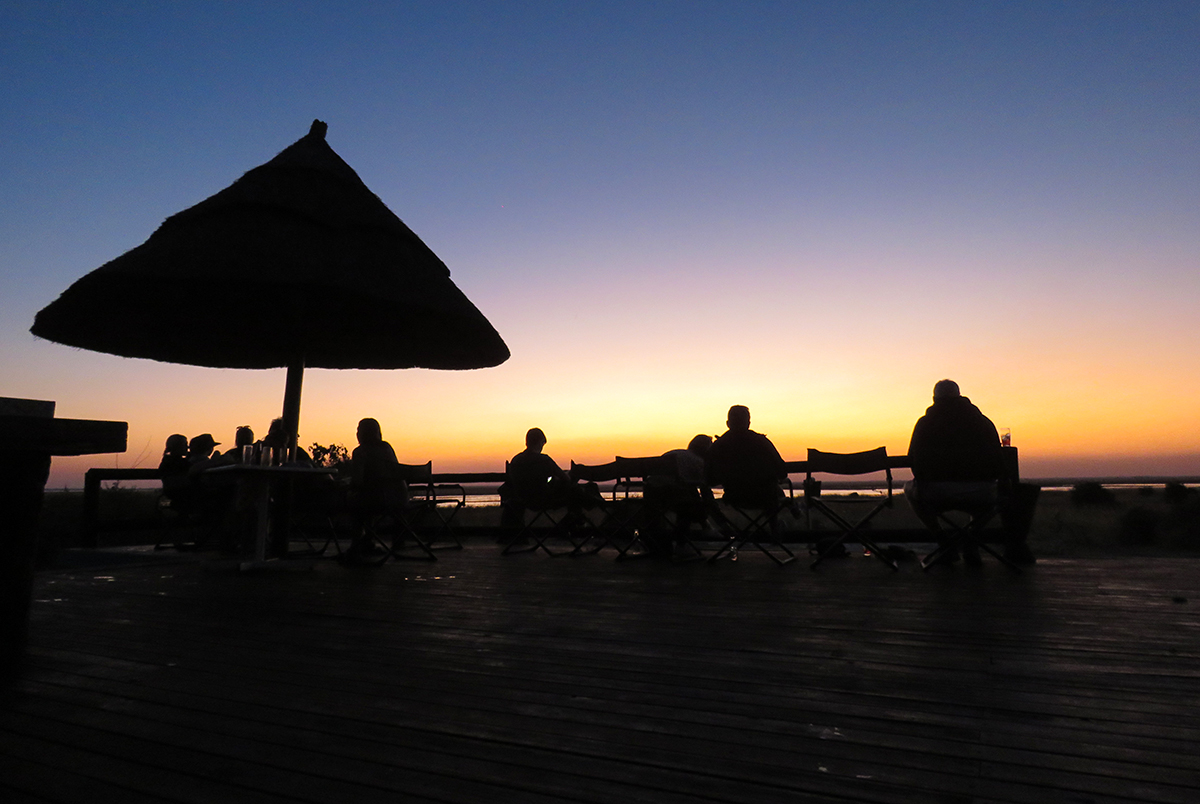
From Senyati, we headed on the main road to Namibia, which runs through the Chobe Game Reserve. Our destination was Muchenje Campsite, which overlooks the floodplain of the Chobe River, and is on the road that leads to the Savute and Moremi wilderness areas that are traversed on the east side of the magnificent Okavango Delta. This is a strict 4×4 road only once in Savute, and also best attempted when water levels are low. Oddly, water is highest in the winter dry season when water from the Angolan Highlands flows down into the delta. Travelling on the main tar road through Chobe can bring spectacular wildlife encounters. We seem to have the idea that if you are on a dirt road, you will see more game. Clearly, no one tells the game this. The last time I travelled this road was two Decembers ago, travelling back from Muchenje on that occasion. Dave and I were on our “little bikes” and we saw a wild dog right adjacent to the road, lots of elephants, and then to top that, we had our ride delayed for some while as a massive herd of Buffalo meandered across the road.
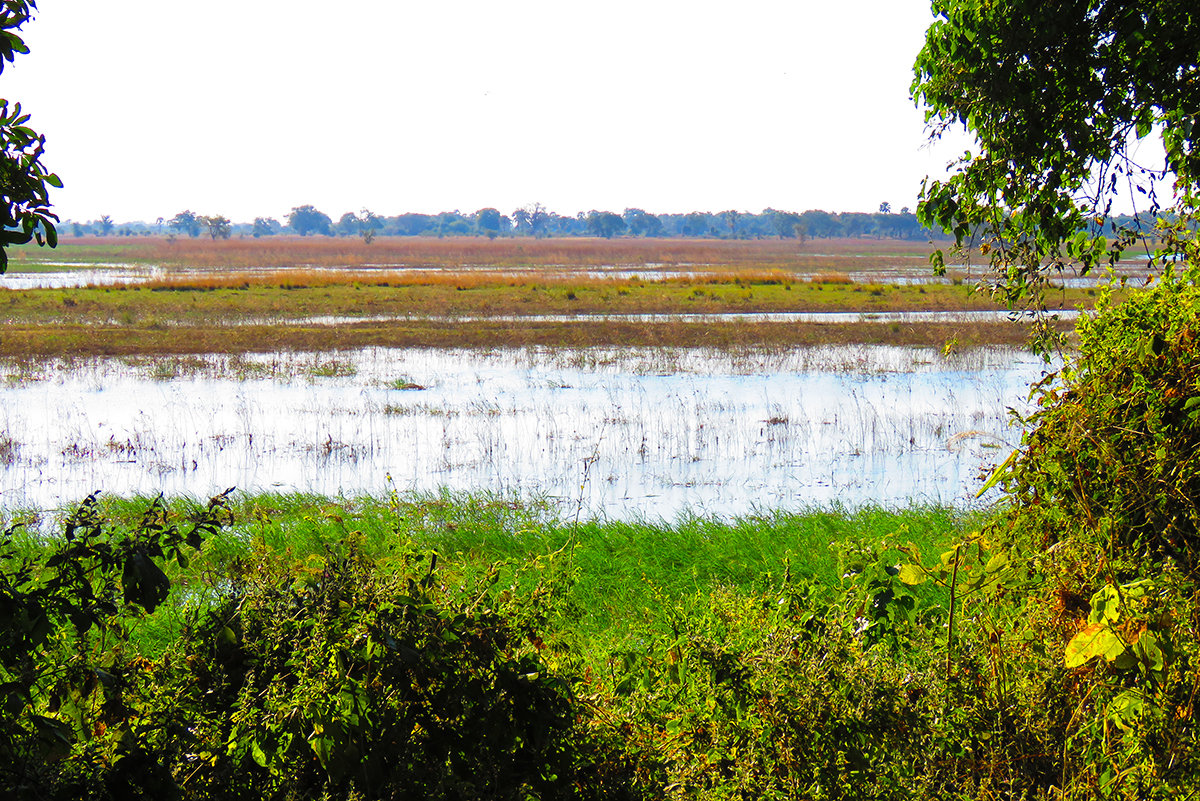
This drive was not so eventful, and we reached Muchenje camp in plenty of time to get settled. We had another wildlife plan for the next day. We would pay park fees and spend the morning in the park, but this time driving the dirt roads that run next to the Chobe River. A highlight of camps on the Chobe floodplain at this time of year is experiencing the most haunting and spectacular African sunsets imaginable. We drove to a lodge called Mwandi View, where Dave and I stayed on our bike trip. They have a deck in front of their dining area, which makes for incredible sunset viewing, complete with your choice of sundowner in hand. O my Lord! The sunset did not disappoint. While no photo truly can capture such an overwhelming spectacle, it will give you a glimpse of what we experienced. The sun, now an orange orb on the horizon, lights a silver shimmering carpet across the floodplain. As the sun sets and slides below the horizon, the orange changes to red and the silver carpet glows like lava. Truly, I don’t have words for what is almost a spiritual experience. I would literally do this trip to experience just one such sunset! We drove back in the gloaming to Muchenje, each quiet with their own thoughts shaped by what we had just witnessed. Dinner of fillet, butternut and salad put paid to another stunning day spent savouring the delight that is wild Africa.
Early the next day, we pulled up to the Ngoma gate for our game drive along the Chobe. It was quite nippy, as it often is at sunrise in winter. With the rising sun providing a silver lining to the scudding clouds, it was the promise of another wonderful day. In no time, the sun’s heat would obliterate the clouds to once again give an uninterrupted view of “big blue” in all its azure magnificence. The game encounters began. A troop of sleepy, and obviously cold, baboons were sheltering from the light breeze behind a bush. You could literally see the misery on their faces as they huddled together for warmth. Zebra and the journeys of the giraffe were plentiful. We encountered the first herd of roan antelope that I have ever seen in the wild. The road along the river was in reasonable condition, and 4-wheel drive was not required, despite some rocky and sandy inclines. The constant river floodplain backdrop, also with the rising sun playing on it, revealed the occasional fisherman dropping nets from his Makoro dugout canoe. “Aren’t there crocs in the Chobe?” was the obvious question on everyone’s lips. Well, a man’s gotta eat, you know!
Meandering down the riverside roads, all was truly well with our souls. Soaking in nature in all its glory without the interruptions of fiendish electronic gadgets was just so good! We stopped for a leg stretch, then drove to one of the camps where which was seemingly uninhabited, but did chat with the occupants of a game viewing vehicle who shared the news of four lions on a zebra kill. As Murphy would have it, this kill was on the tar road that we had travelled the previous day. We set out on a deep sand and rutted track to try and get to the site of the kill. The Mitsubishis were in their element. We turned onto the tar road, eventually to immediately see a huge hyena who was no doubt heading to the kill, a kilometre or so down the road. By the time we arrived, there were a few vehicles trying to catch sight of the lions who, irritated by the attention, had dragged their meal deeper into the bush. We saw the odd flick of a lion’s ear or tail, but nothing that clearly resembled a lion. With grumbling tummies, we decided to return to camp for a brekkie.
Muchenje is a lovely, well-run campsite which also has the option of safari tents and chalets. A swimming pool, set in pleasant surroundings, is a haven in the heat of the summer. Vervet monkeys are the perennial plague of African campsites. Muchenje have a cheeky crew who will ransack your camp given half a chance. I carry two catapults and marbles to discourage these little guys, and Dean and I dished out some punishment till they decided there must be easier pickings elsewhere. Lisa and I manufactured yummy jaffles till everyone had eaten their fill. Our signature jaffle was a cheese and bacon chap into which we broke an egg and then patiently turned until the egg was perfectly cooked, but with still runny yolk. Why does food prepared in the bush just taste so much better? The shady campsites at Muchenje mean that in the cooler months, an afternoon siesta in your tent is very much an option. With the jaffles increasing the gravitational pull on our eyelids, it was nap time.
Muchenje has a deck overlooking the floodplain too, so armed with our chosen bevvie, we trooped down to witness another incomparable sunset before getting our braai fire going. We ate, and then chilled and chatted, sipping on some red wine. This time spent around a campfire in a wild African setting, preparing and enjoying a meal in the company of good friends, is incredibly restorative. There is a scripture which says, “Be still, and know that I am Lord”. The truth is, we don’t really know how to be still in the frenzied world in which we live. We get so dragged along in the craziness that the only way to chill is to realign with the rhythms of nature. Well, that’s what works for me. Botswana, with its low population density and untamed, wide-open spaces, remains my go-to place for really chilling.
Our last day in Botswana was to be at Elephant Sands. Those of you who have read any of my previous Botswana blogs will know that it is one of my “go-to” spots. Situated 50 k’s north of Nata, it is a short hop from Muchenje. We packed up and set sail, being rewarded with some elephant sightings as well as something really special. A honey badger swaggered across the road just in front of us and then climbed a bank before disappearing into the bush. I just love these animals! Tougher than a tough thing and totally fearless, they are all heart! Their arrogant swaggering gait kind of sums them up. “Mess with me if you dare!” We stopped at Pandamatenga for the obligatory “slap chips”. 100 k’s from Kasane, it is the perfect way to banish mid-morning hunger pangs.
We pulled into Elephant Sands, where we were booked to camp. Whilst the campsites are pleasant, they get somewhat overwhelmed when they are very full. Given that it was school holidays, there were plenty of overlanders, some with hordes of rug rats in tow. A solitary elephant ambled in, spent some time at the waterhole, then beat a hasty retreat, no doubt also put off by the hordes of loud kids let off the leash by inconsiderate parents. Note to self, avoid Elephant Sands during school holidays. Peter very kindly paid to upgrade us to two comfortable Safari tents opposite the lodge and away from the child-induced pandemonium. We settled in and I prepared a chicken, pumpkin and potato pot, which went down singing hymns! Sitting on the stoep of the tent and gazing over the rain-fed waterhole, testimony to this year’s good rains, we watched the sun set behind the lodge as it bade farewell to another day. The moon deserves an honourable mention. It developed, over the course of our trip, into a huge bright full moon, giving off its gentle glow, subtly illuminating the landscape. God must have had such fun when He created all these
wonders!

We slept warm and snug despite the coldest night that I have ever experienced at Elephant Sands. The next morning, we packed the vehicles and basked in the early morning sun, which played over us as we enjoyed breakfast on the patio of the lodge. We had a long day ahead, so we got on the road, retracing our steps to South Africa. This is where some local knowledge significantly shortened our trip. We turned onto the Palapye Martin’s Drift Road and then, about 35 k’s along this road, took a tar road which took us on a scenic drive to Macheneng, and then on to the border at Parr’s Halt. It was here that we had the only negative experience of our trip.
As you approach the border at the end of the 13k dirt road, it makes a turn to the right, necessitating slow driving and then a sign which says, “Barrier Ahead”. You are then confronted with the gate into the border control establishment proper. Unfamiliar with the setup, you look through the gate to see where you need to park. When I came to a stop, after traversing the gate at perhaps 3 km/h, a policeman told me that Dave and I had failed to heed the stop sign on the gate post, and not come to a dead stop before parking, and that we should go to his office. There, a policewoman told me that we had ignored the laws of Botswana and must each pay a 1000 Pula fine. I have travelled to Botswana since 1984 and certainly respect the law there. I have, in fact, supported the fact that, unlike in SA, laws are enforced.
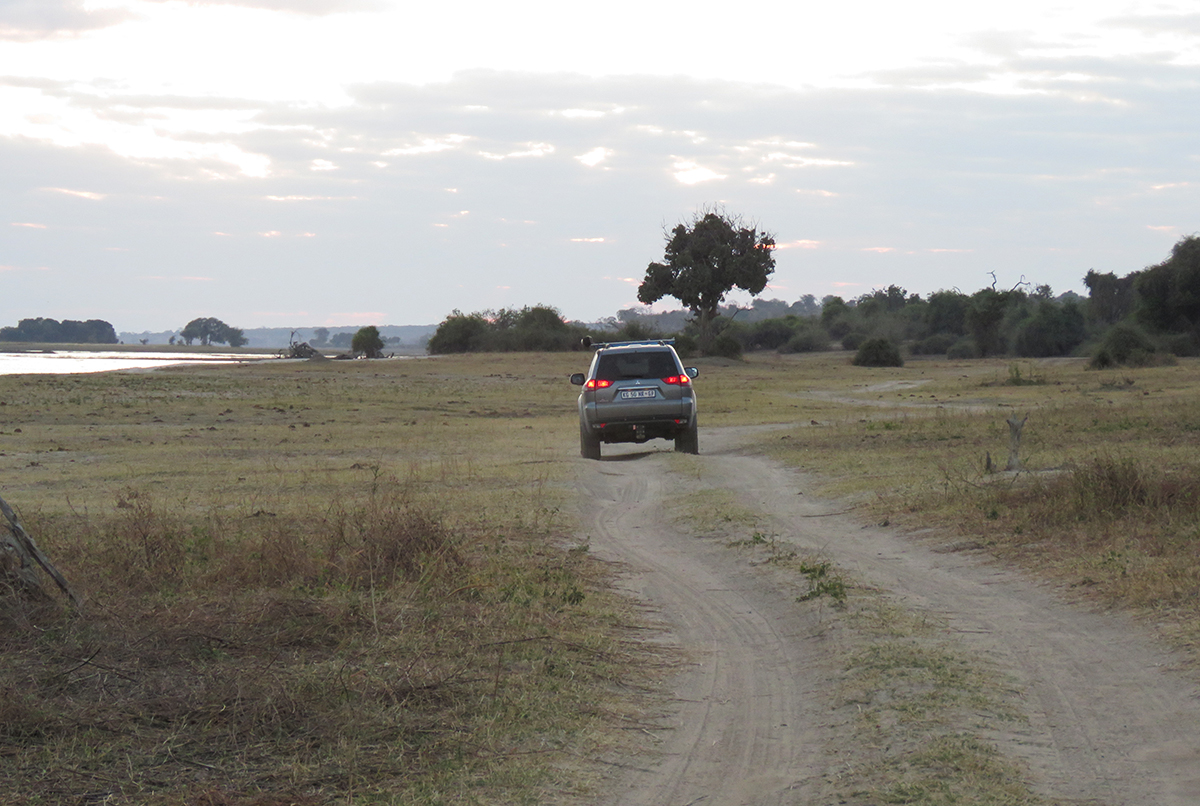
Laws are made with the objective of maintaining order and keeping people safe. Our actions were in no way contravening this spirit. It was a blatant attempt to extort money from travellers on a technicality. She then arrogantly and condescendingly said she would allow us to pay 1000 Pula for both of us. Apologising for not stopping dead at the sign, I replied that either we both paid, or they should warn us to be more vigilant in future and let us go. I added that if fined for a ridiculous technicality, I would simply never set foot in Botswana again. While I was speaking, a Botswana-registered car, as well as an official Botswana Revenue Service vehicle, both merrily drove straight through the gate without stopping either. Clearly, no one obeys this ridiculously placed sign on the basis that they are coming to a stop within five metres anyway! Witnessing the indiscretion of their own, our licences were handed back and we left.
This is so “African”. I have found the Botswana police to be competent, fair and reasonable over my many years of travelling in their wonderful country, but then all it takes is a couple of short-sighted and arrogant officials to blight this record. Why is it that we keep on scoring “own goals” in Africa? We travelled on for another night at De Kuile, where we braai’d for the last time and then built up the fire to enjoy our final “bushveld TV” whilst reminiscing on another amazing Botswana adventure. The next morning, it was back to the big smoke, all very chilled versions of the travellers that had headed north 9 days earlier. God willing, we will be back in Botswana sooner rather than later. Kubu Lodge on the Chobe with Irene in December? I think so.






